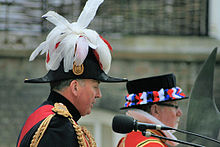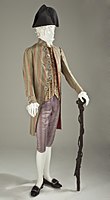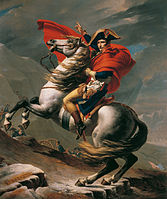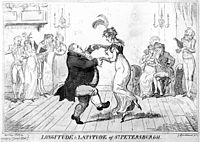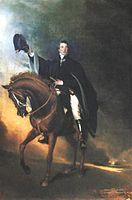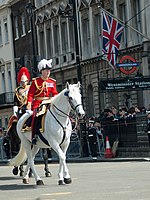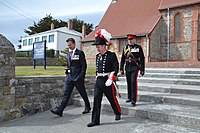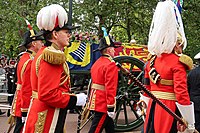
A slouch hat is a wide-brimmed felt or cloth hat most commonly worn as part of a military uniform, often, although not always, with a chinstrap. It has been worn by military personnel from many different nations including Australia, Ireland, the United Kingdom, Canada, India, New Zealand, Southern Rhodesia, France, the United States, the Confederate States, Germany and many others. Australia and New Zealand have had various models of slouch hat as standard issue headwear since the late Victorian period.

The kepi is a cap with a flat circular top and a peak, or visor. In English, the term is a loanword from French: képi, itself a re-spelled version of the Alemannic German: Käppi, a diminutive form of Kappe, meaning "cap". In Europe, the kepi is most commonly associated with French military and police uniforms, though versions of it were widely worn by other armies during the late 19th and early 20th centuries. In North America, it is usually associated with the American Civil War, as it was worn by soldiers on both sides of the conflict.

The tricorne or tricorn is a style of hat that was popular during the 18th century, falling out of style by the early 1800s, though not called a "tricorne" until the mid-19th century. During the 18th century, hats of this general style were referred to as "cocked hats". At the peak of its popularity, the tricorne varied greatly in style and size, and was worn not only by the aristocracy, but also as common civilian dress, and as part of military and naval uniforms. Typically made from animal fiber, the more expensive being of beaver-hair felt and the less expensive of wool felt, the hat's most distinguishing characteristic was that three sides of the brim were turned up (cocked) and either pinned, laced, or buttoned in place to form a triangle around the crown. The style served two purposes: first, it allowed stylish gentlemen to show off the most current fashions of their wigs, and thus their social status; and secondly, the cocked hat, with its folded brim, was much smaller than other hats, and therefore could be more easily tucked under an arm when going inside a building, where social etiquette dictates that a gentleman should remove his hat. Tricornes with laced sides could have the laces loosened and the sides dropped down to provide better protection from the weather, sun, and rain.

A bearskin is a tall fur cap derived from mitre caps worn by grenadier units in the 17th and 18th centuries. Initially worn by only grenadiers, its usage was extended to several other military units in the 19th century. The bearskin cap continued to see use in battle during the mid-19th century, although by the 20th century, its use was limited as a headgear reserved for parade dress. In the 21st century, the bearskin cap is retained by select military units as a prominent element of their ceremonial and full dress uniforms.

The Glengarry bonnet is a traditional Scots cap made of thick-milled woollen material, decorated with a toorie on top, frequently a rosette cockade on the left side, and ribbons hanging behind. It is normally worn as part of Scottish military or civilian Highland dress, either formal or informal, as an alternative to the Balmoral bonnet or Tam o' Shanter.

The pith helmet, also known as the safari helmet, salacot, sola topee, sun helmet, topee, and topi is a lightweight cloth-covered helmet made of sholapith. The pith helmet originates from the Spanish military adaptation of the native salakot headgear of the Philippines.

A peaked cap, peaked hat, service cap, barracks cover, or combination cap is a form of headgear worn by the armed forces of many nations, as well as many uniformed civilian organisations such as law enforcement agencies and fire departments. It derives its name from its short visor, or peak, which was historically made of polished leather but increasingly is made of a cheaper synthetic substitute.
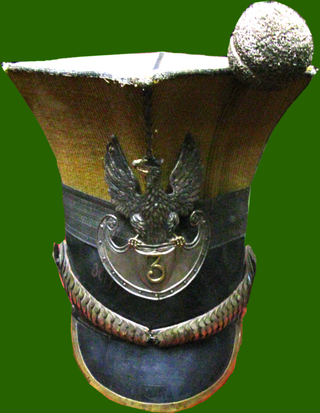
Czapka is a Polish, Belarusian, and Russian generic word for a cap. However, it is perhaps best known to English speakers as a word for the 19th-century Polish cavalry headgear, consisting of a high, four-pointed cap with regimental insignia on the front to which feathers or rosettes were sometimes added.
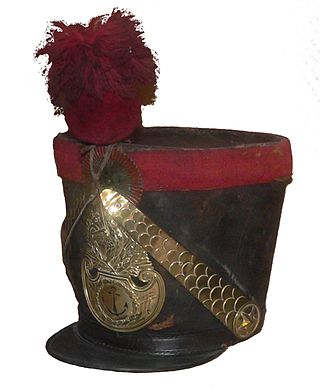
A shako is a tall, cylindrical military cap, usually with a visor, and sometimes tapered at the top. It is usually adorned with an ornamental plate or badge on the front, metallic or otherwise; and often has a feather, hackle, or pompom attached at the top.

Full dress uniform, also known as a ceremonial dress uniform or parade dress uniform, is the most formal type of uniforms used by military, police, fire and other public uniformed services for official parades, ceremonies, and receptions, including private ones such as marriages and funerals. Full dress uniforms typically include full-size orders and medals insignia. Styles tend to originate from 19th century uniforms, although the 20th century saw the adoption of mess dress-styled full-dress uniforms. Designs may depend on regiment or service branch. In Western dress codes, full dress uniform is a permitted supplementary alternative equivalent to the civilian white tie for evening wear or morning dress for day wear – sometimes collectively called full dress – although military uniforms are the same for day and evening wear. As such, full dress uniform is the most formal uniform, followed by the mess dress uniform.
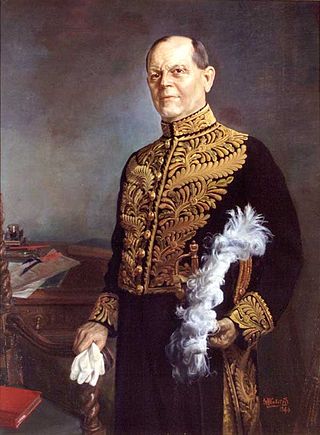
Court uniform and dress were required to be worn by those in attendance at the royal court in the 19th and early 20th centuries.
The uniforms of the Canadian Armed Forces are the official dress worn by members of Canada's military while on duty.

The uniforms of the British Army currently exist in twelve categories ranging from ceremonial uniforms to combat dress. Uniforms in the British Army are specific to the regiment to which a soldier belongs. Full dress presents the most differentiation between units, and there are fewer regimental distinctions between ceremonial dress, service dress, barrack dress and combat dress, though a level of regimental distinction runs throughout.
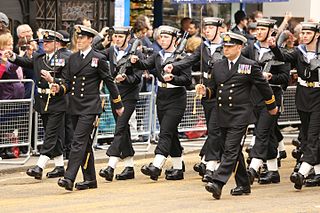
The uniforms of the Royal Navy have evolved gradually since the first uniform regulations for officers were issued in 1748. The predominant colours of Royal Navy uniforms are navy blue and white. Since reforms in 1997 male and female ratings have worn the same ceremonial uniform.

Diplomatic uniforms are ornate uniforms worn by diplomats from some countries at public occasions. Introduced by European states around 1800 and patterned on court dress, they were abandoned by most countries in the twentieth century, but diplomats from some countries retain them for rare, formal occasions.

The Royal Marines uniform is the standardised military dress worn by members of the Royal Marines.

Peerage robes are worn in the United Kingdom by peers and are of two varieties for two occasions: Parliament robes, worn on ceremonial occasions in the House of Lords, and Coronation robes, worn at coronations of monarchs.

The uniforms of the Italian Armed Forces include the official dress worn by members of the Italian Armed Forces while on duty. Each of the branches of the Italian Armed Forces, the Italian Army, the Italian Navy, the Italian Air Force, and the Carabinieri Corps, maintains its own style of dress. The Italian Armed Forces have an extensive history, during which they have undergone changes in the equipment they use, and the military uniforms they wear.

The Albert helmet is a type of dragoon helmet introduced by the British military in the 19th century. The helmet was developed by Prince Albert of Saxe-Coburg and Gotha in 1842, and was first introduced for service with the Household Cavalry in 1843. The helmet was introduced to other heavy cavalry units in the British Empire in 1847.



